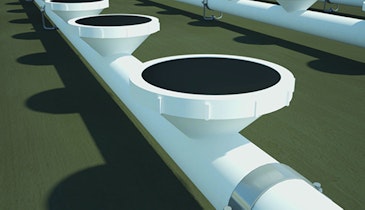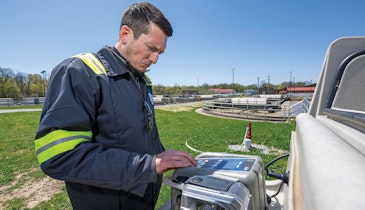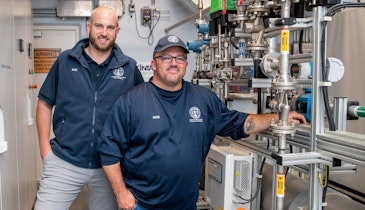The reaction of sulfates with anoxic biofilms in wastewater environments creates hydrogen sulfide (H2S) in the wastewater. As some of that H2S turns into a gaseous form at the surface of the water, it can fill the headspace in pipes or other structures. The severity of hydrogen-sulfide concerns can be exacerbated by conditions in the water and the surrounding environment. For example, long hydraulic-retention times in force mains, high turbulence, high temperatures, high acidity and high biochemical oxygen demand conditions can all magnify its concentration and impacts.
The problems
Even just a little bit of H2S can lead to big problems. Its “rotten egg” odor is noticeable at 0.5 ppm and corrosion also starts at 0.5 ppm. But the concentration measured near the top of a manhole can be vastly different than that measured in the wastewater itself. Knowing the worst-case scenario by monitoring H2S in the wastewater can have tremendous influences on the outcomes of hydrogen sulfide’s three greatest challenges:
Worker Safety. As bad as the typical hydrogen-sulfide odor complaints from the public are, news stories about accidental worker deaths in wastewater environments are worse. The better handle that utilities can get on actual hydrogen-sulfide concentrations in the wastewater earlier in the collection system or wastewater treatment plant, the greater their awareness and ability to be effective in taking precautionary steps.
Odor Control. There was a time when wastewater treatment plants and lift stations were situated far from population centers, but as open space in developed areas shrinks due to new construction, so too do the odds of odors going undetected by residents. Accurately measuring hydrogen-sulfide concentrations at their worst in the liquid stream of collection system feeder lines and at plant inlets gives wastewater utilities the opportunity to neutralize them before they cause a public relations nightmare.
Corrosion Control. Discovering damage through visible concrete deterioration is bad enough — a situation where H2S converted into sulfuric acid by sewer-pipe biofilms eats away at the concrete surface, turns it into flakey gypsum, corrodes its reinforcing steel and weakens the overall structure. Worse yet is undetected crown-rot corrosion in the headspace of an underground collection pipe that can lead to a collapse, damage to adjacent structures and compounded remediation problems.
The solution
Hach offers two hydrogen sulfide sensors that can continuously monitor H2S in the liquid and gas phase, allowing you to optimize the treatment process and proactively control H2S before it causes issues. Detecting H2S in the liquid phase enables system operators to identify that compound at its highest concentrations — concentrations not necessarily exposed to the gas-phase sensing environment.
The GS1440 (made for use in nonhazardous locations) and GS2440EX hydrogen sulfide sensors from Hach provide accurate readings in both the liquid phase and the gas phase. Having an accurate picture improves the ability to manage odor, corrosion or other problems with the minimal necessary investment in chemical treatment. That avoids the expense of overdosing and reduces the risk of upsetting delicate downstream biological processes. The same data can even be used to surcharge industrial customers whose sulfide-loaded effluents contribute to costly problems or to convince them to implement pretreatment to reduce the impacts.





